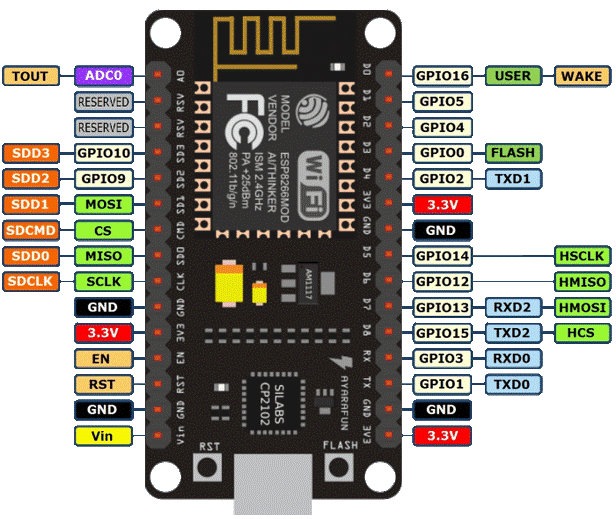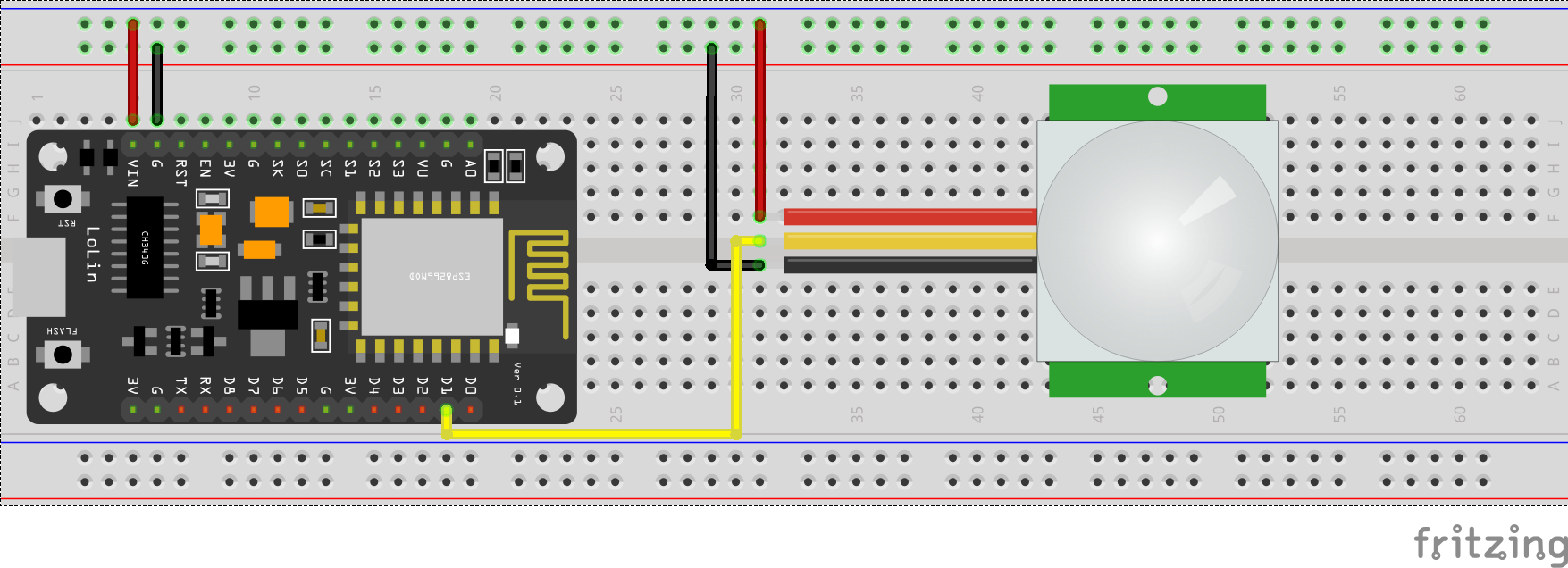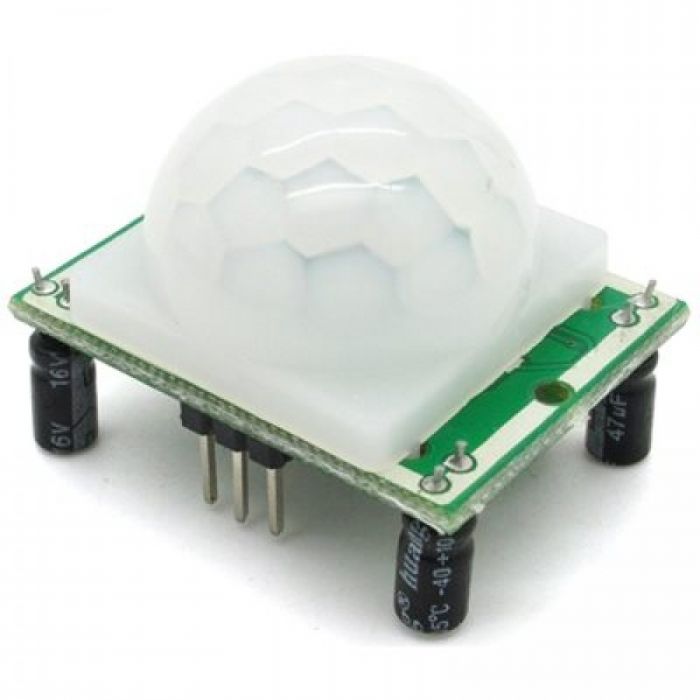PIR sensor

NodeMCU

Pin Configuration

int PIR = D1;
void setup() {
pinMode(PIR,OUTPUT); // PIR SENSOR AS INPUT DEVICE
Serial.begin(9600); // 9600 BITS TRANFERING TO PC PER SECOND
}
void loop() {
if(digitalRead(PIR) == HIGH){
Serial.println("Motion Detected");
}
else{
Serial.println("Motion Not Detected");
delay(150); // Delay to Avoid the fast print
}
}
